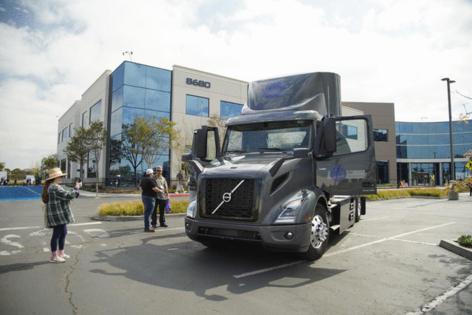Big rigs in California are getting cleaner -- but can long-range targets for trucks be met?
Published in Automotive News
California policymakers want to clean up the emissions spewed by the trucking industry — and they've passed mandates and established targets to get there.
The federal government recently followed up, creating its own set of national guidelines that are staggered by year and truck classification.
With California at the forefront, adoption is gaining ground among vehicles that travel around 200 miles or less per day — what's called the short-haul sector that includes delivery vans, buses, etc.
But can big rigs traveling longer distances eventually complete the transition to zero-emissions at the pace the mandates laid down by California and the federal government require? It's an open question.
"I think we're still in the first half of the first inning when it comes to truck electrification, but it's accelerating quickly," said Lawren Markle, director of media relations for GNA, a Santa Monica consulting firm owned by TRC Companies that specializes in clean transportation and energy.
But the American Trucking Associations, an industry trade group, says the rules are moving too fast.
"The margins in the trucking industry are very, very slim — like 2 to 3 percent — so it's a very competitive market as it is," said Jacqueline Gelb, the trucking associations' vice president of energy and environmental affairs. "So the fleet likely is not going to be able to wholly bear any type of increase in costs, and that will get passed on to the consumer."
The mandates
California instituted its Advanced Clean Fleets, or ACF, rule at the start of this year. Among its provisions, the rule requires large fleet operators of more than 50 vehicles or $50 million in revenue to adopt zero-emissions medium- and heavy-duty vehicles.
Operators of what's called "last-mile" delivery trucks and vans — that is, the final phase of moving a product from the back of truck to a customer's doorstep — must convert at least 10 percent of their fleets to zero-emissions by next year.
...continued
©2024 The San Diego Union-Tribune. Visit sandiegouniontribune.com. Distributed by Tribune Content Agency, LLC.







Comments